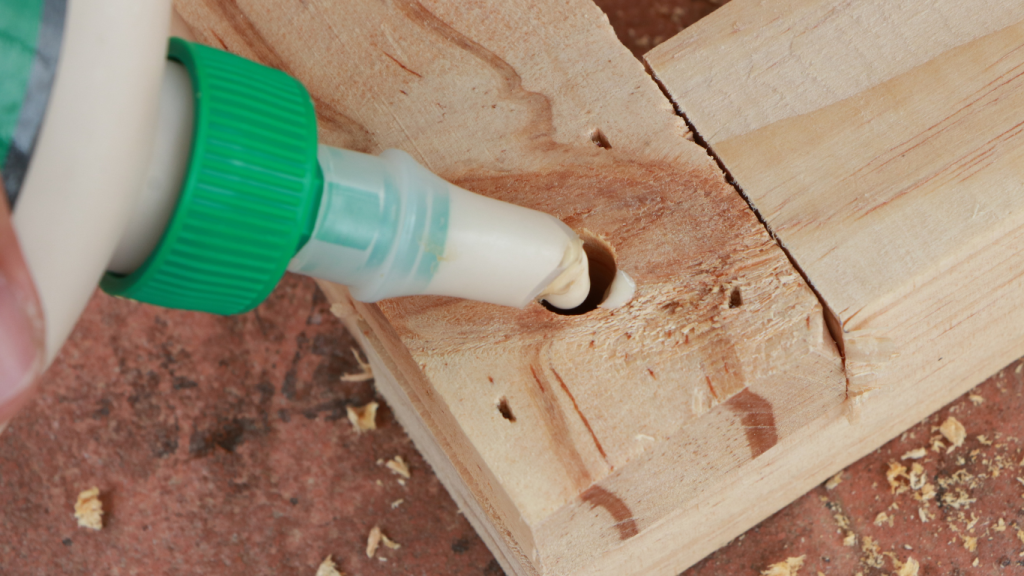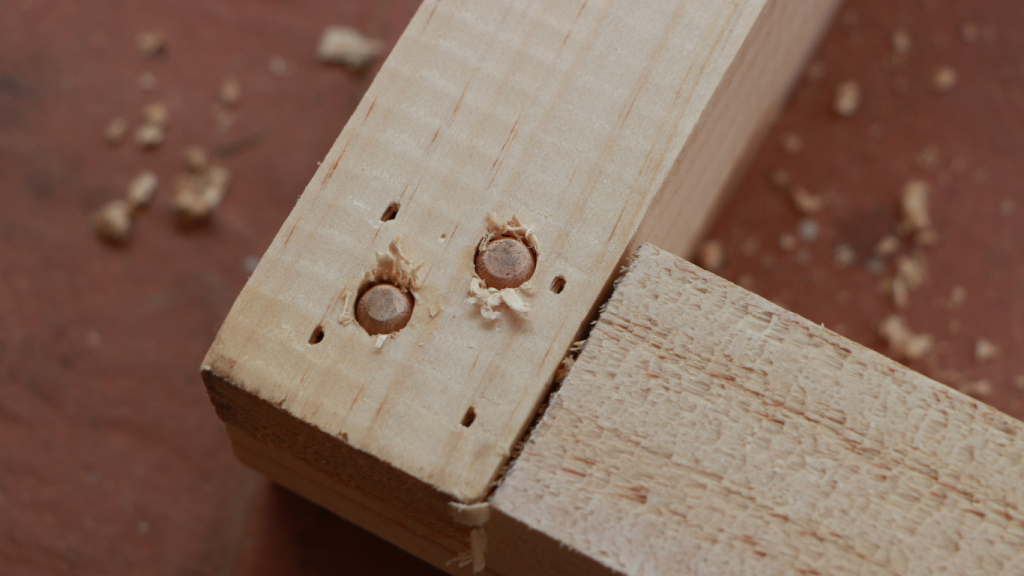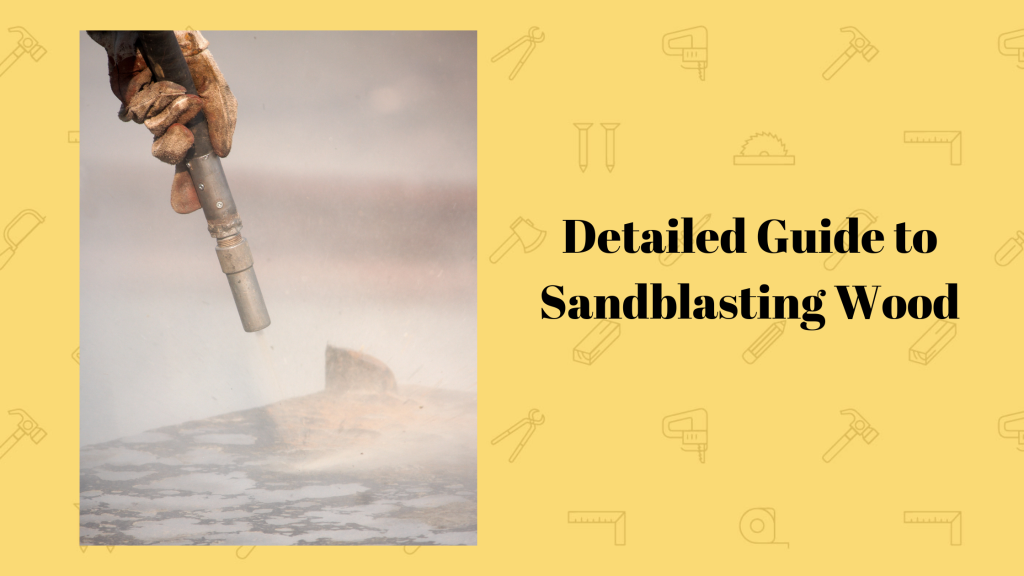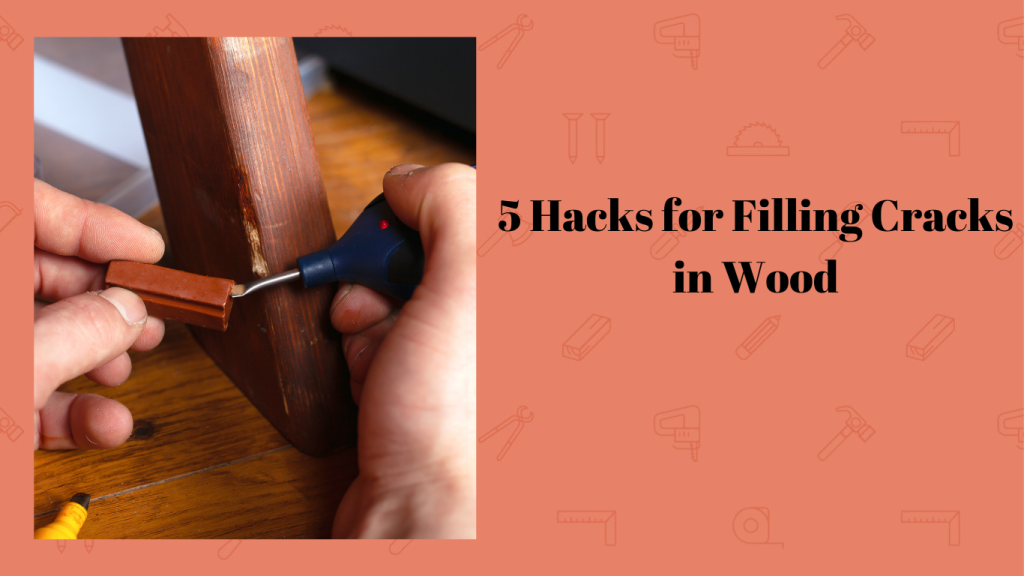Filling screw holes in wood, and poorly placed screws are the top 2 easiest things to annoy a woodworker. Sometimes the screw has been stripped out, and other times, the hole is too darn big. Both scenarios leave you with a gaping hole too obvious to ignore.
If you’ve never experienced this, consider yourself one of the lucky ones because the process can be tricky. Without appropriate wood filling products, you can end up with poorly filled gaps, or like me, a mess and no results. So, I gathered a few dummy-proof ways to plug a hole in wood with fillers.
Read on to explore the process of filling screw holes in wood like a pro, without complicated equipment.
Method One: Use Wood Glue
Wood glue isn’t just a good adhesive, because it can come in handy when repairing screw holes in wood. After filling it with wood glue, you might need to sand it down to get it uniform with the remaining flooring.
You’ll need:
- A tube of wood glue
- A wire brush
- A putty knife
- 220-grit sandpaper
Using a wire brush, start by cleaning out the gap to remove any gunk or wood sticking out of it. When using wood glue, I always sand down the edges to give me a completely smooth surface. Then, I use a putty knife to pack the gap as much as possible and wipe any excesses with a damp cloth.
Once the wood glue has dried, go in with 220-grit sandpaper until you have a level surface. From here, you can throw in some stain, if you’re feeling fancy.

Method Two: Use Wood Putty
The second easiest way to fill a screw hole is wood putty. It is easily accessible, pretty effective, and looks like wood after drying.
You’ll need:
- Wood putty
- 220-grit sandpaper
- A putty knife
- A small bowl
Squeeze some wood putty in the bowl and work into the gap with the putty knife. Using the putty knife gives you more control, as compared to squeezing directly into the gap. When you have filled the gap completely, then leave it out to dry overnight.
Once the putty is dry, use the 220-grit sandpaper to level the surface, then wipe with a damp rag and dry again. This next step is totally optional, but if I don’t get the desired results, I always go in with another layer of putty.
When the potty is rock-solid, you can sand and stain it to your desired hue.
Method Three: Use Wooden Plugs to Hide Pocket Holes
Wood plugs are small wooden rods designed with a slant to fit into pocket holes in furniture. Your local hardware store sells them in different shades for different types of wood, so they are pretty versatile. Plus, since they come in standard sizes that match the sizes of common screws, you can’t go wrong.
You’ll need:
- A hammer
- A wood chisel
- Wood plugs
- Wood glue
Layer some wood glue directly onto the plug, or squeeze some wood glue into a bowl and dunk the plug. Whichever method you choose, make sure you coat the entire plug evenly to guarantee a good bond. Most wood glues, like the Burcherry Wood Plugs I use, dry in a matter of seconds, so be prepared to work quickly
Next, push the plug straight into the hole and press firmly until it is well-seated. There’ll be ¼-½ of the plug left outside, but don’t panic – it is completely normal and you’ll remove it soon. Use the hammer to gently tap the plug in as far as possible, and let it set for 10 minutes.
It’s time to use your handy chisel to shear off the exposed part of the wood screw. Position the chisel at the junction between the surface and the wood plug, and push with enough force to cut the wood. Sand down the remaining stub (if there is one) and stain your newly covered gap.

Method Four: Use Spackling Paste as a Filler For Screw Holes
Spackling paste is another easy-to-source wood filler for getting rid of screw holes. It is perfect for holes bigger than screw heads and it dries quickly, so you can use it for quick projects.
You’ll need:
- A putty knife
- A small bowl
- Spackling paste
- 220-grit sandpaper
Start by squeezing some soaking paste into a clean bowl. Then, use a putty knife to work the paste into the hole, making sure you get all the tiny crevices. I’d recommend you use the Gorilla Heavy Duty Spackling Primer because it is lightweight and impressively durable.
Then, dry the wood filler for 10-20 minutes, or until the paste is completely dry. Afterward, you can sand it down and stain the filler as you like.
Frequently Asked Questions
Is There a Wood Filler That Will Hold a Screw?
Absolutely. Most wood fillers are built to hold screws and nails, but they might not do a great job at it. Basically, not every option is a drillable wood filler.
Enter wood plugs – wood plugs are perfect for holding screws since they are actually pieces of wood glued into the gap. I use the Burcherry Hardwood Plugs because of the quality and sheer variety.
How Do You Fill Nail and Screw Holes in Wood?
You can fill nails and screw holes in wood with putty, wood glue, wooden plugs, or spackling paste. All these methods are effective, but they are best suited to different scenarios. For example, spackling paste is the preferred choice for holes bigger than the screw head.
What is The Best Glue for Filling Screw Holes?
My mates and I swear by the Gorilla Ultimate Wood Glue. Firstly, the Gorilla manufacturers always go hard with their adhesives, and it does a superb job of solidly filling screw holes.
Some Woodshop Wisdom…
Screw holes and short planks have one thing in common – if they could, woodworkers won’t ever touch them with a 6ft pole. By simply existing, gaping screw holes take minor inconvenience to a hole new level.
Filling screw holes in wood is a hassle, but only when you’re clueless. This guide serves to do just that – tell you all the easy tricks you can do without complicating things. Focus on using high-quality wood fillers, and these screw holes have nothing on you!
*This post may contain affiliate links. Please see my disclosure to learn more.



